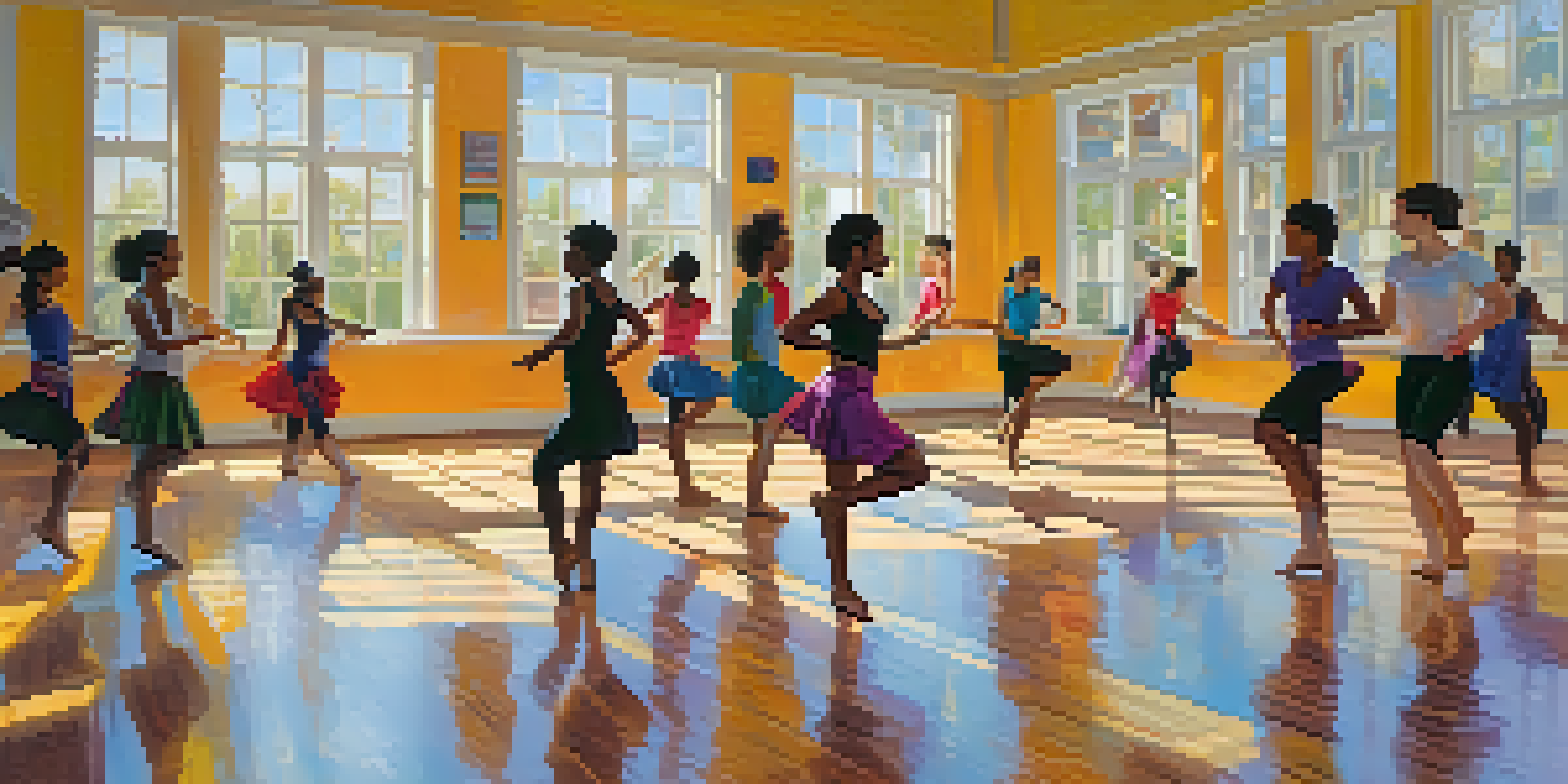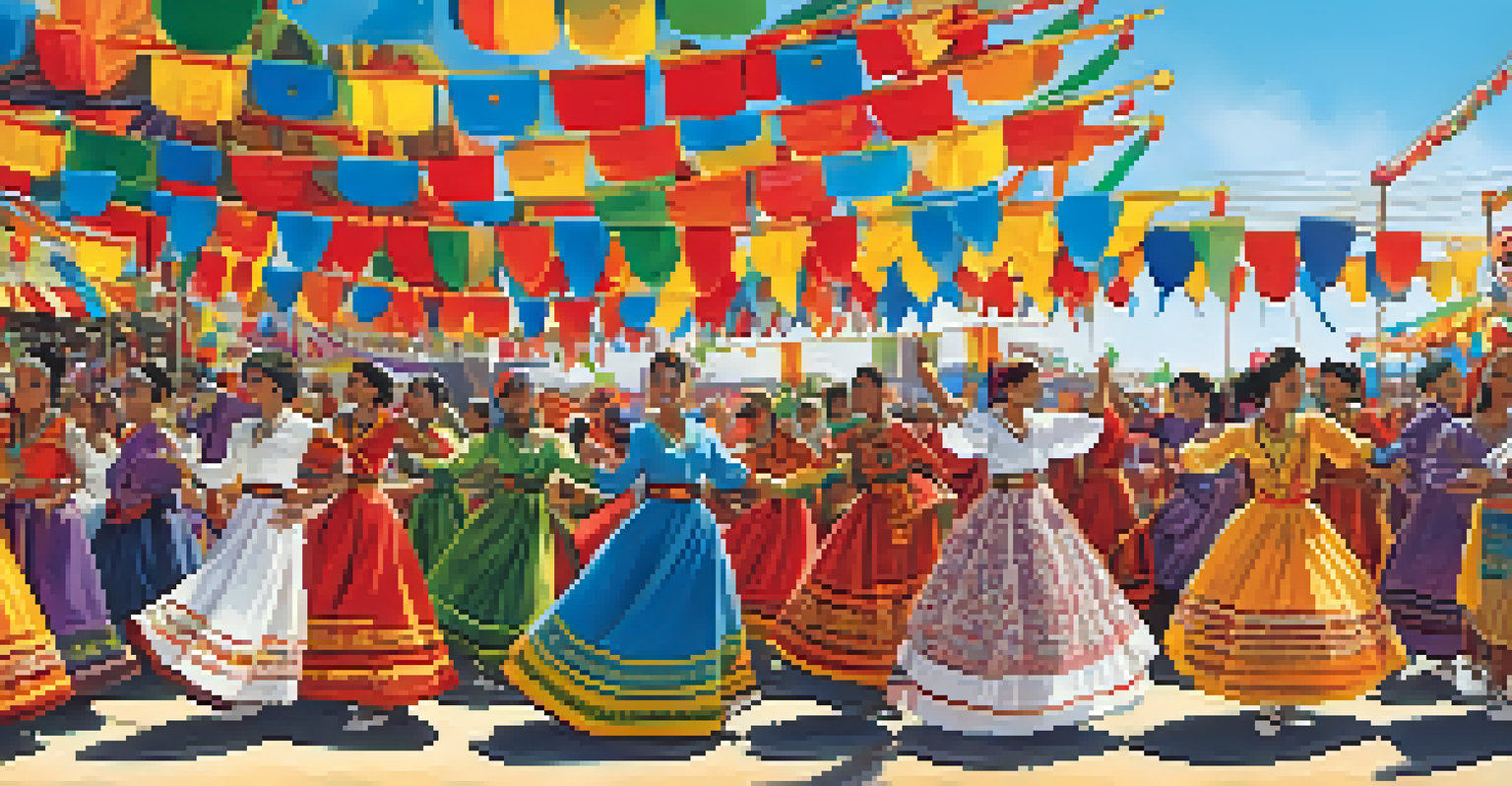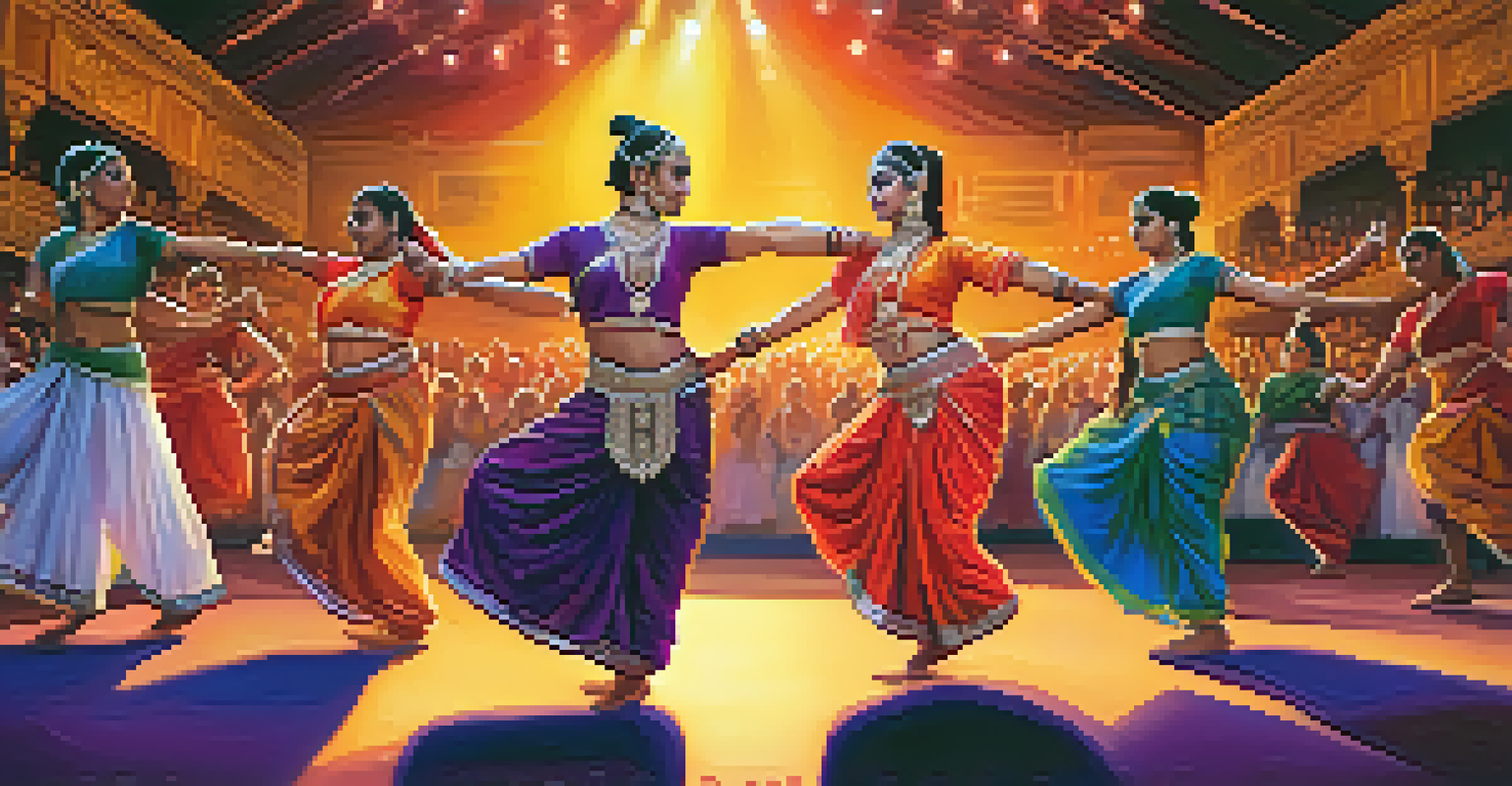The Impact of Immigration on Local Dance Styles

Understanding the Connection Between Immigration and Dance
Dance is more than just movement; it’s a reflection of culture and identity. When immigrants bring their traditions to a new land, they often share their unique dance styles, which can enrich local art scenes. This blending of cultures can lead to the creation of new forms of dance that reflect a fusion of different heritages.
Dance is the hidden language of the soul.
For example, the introduction of Latin dance styles like salsa and bachata in the United States has transformed local dance communities. These vibrant styles not only celebrate their roots but also adapt to local influences, making them accessible and appealing to a wider audience. The result is a dynamic dance landscape that continues to evolve.
Ultimately, the connection between immigration and dance highlights the importance of cultural exchange. As communities become more diverse, dance serves as a universal language that fosters understanding and appreciation among different cultures.
Historical Evolution of Dance Through Immigration
Throughout history, immigration has played a significant role in shaping dance styles. Take the example of African American dance forms, which were born out of the African diaspora's influence in the United States. These styles, including jazz and tap, were influenced by African rhythms and movements, showcasing the enduring impact of immigration on local dance scenes.

Similarly, the arrival of immigrants from Eastern Europe brought folk dances like the polka and czardas to American dance halls. These dances not only provided entertainment but also served as a way for immigrants to maintain a connection to their heritage. Over time, these styles have been embraced and transformed by local communities, demonstrating the fluid nature of dance.
Cultural Exchange Enriches Dance
Immigrants contribute unique dance styles, leading to a rich blend of cultural traditions that enhances local art scenes.
This historical evolution illustrates how dance is a living art form, continuously shaped by the experiences and stories of those who contribute to it. Each new wave of immigration adds layers to the dance narrative, enriching local traditions and fostering a sense of community.
The Role of Dance Schools and Communities in Adaptation
Dance schools play a pivotal role in blending different styles brought in by immigrants. These institutions often provide a platform for cultural exchange, where students learn not only techniques but also the stories behind various dance forms. It’s in these classrooms that traditional dances are taught alongside contemporary styles, creating a vibrant learning environment.
The dance is a poem of which each movement is a word.
Moreover, community events and festivals often showcase immigrant dance styles, encouraging participation from locals. Events like multicultural dance showcases allow for a lively exchange of traditions, where everyone can learn a few steps while celebrating diversity. This communal aspect makes dance a powerful tool for building connections between different cultures.
As communities embrace these new styles, they also create a sense of belonging for immigrants. Whether it’s through dance classes or local performances, these opportunities foster a shared love for movement, highlighting how dance can unite people across cultural boundaries.
Fusion Dance Styles: A Celebration of Diversity
Fusion dance styles have emerged as a vibrant representation of cultural intersection. These styles blend elements from various dance traditions, resulting in unique forms that reflect the multicultural makeup of society. A great example is Bollywood dance, which combines classical Indian dance with contemporary styles like hip-hop and jazz.
This blending not only showcases the creativity of dancers but also serves as a celebration of diversity. Fusion dance styles invite performers from different backgrounds to collaborate, creating a space where cultural boundaries dissolve. As a result, audiences experience a rich tapestry of movement that tells the story of shared experiences.
Fusion Dance Reflects Diversity
Fusion dance styles combine elements from various traditions, celebrating cultural intersections and creating innovative forms of expression.
The success of fusion dance styles in competitions and performances highlights their appeal to a broad audience. They provide a fresh perspective on traditional forms, proving that dance is an ever-evolving art form influenced by the world around us.
Challenges Faced by Immigrant Dancers
While the impact of immigration on dance is largely positive, it comes with its challenges. Immigrant dancers often face the hurdle of cultural appropriation, where elements of their traditional dances are taken without understanding or respect for their origins. This can lead to frustration, as these dances are deeply tied to their cultural identity.
Additionally, language barriers and unfamiliarity with local dance scenes can make it difficult for immigrant dancers to find their footing. They may struggle to gain recognition or opportunities, feeling disconnected from the local dance community. It’s crucial for society to create inclusive spaces that welcome diverse dance forms and the stories behind them.
By addressing these challenges, we can foster an environment where all dancers feel valued and appreciated. Promoting respect for cultural origins and providing platforms for immigrant voices is essential for a thriving dance landscape that honors its diversity.
The Influence of Social Media on Dance and Immigration
In today’s digital age, social media has become a powerful tool for sharing dance styles across borders. Platforms like Instagram and TikTok allow dancers from diverse backgrounds to showcase their talent and heritage, reaching global audiences. This visibility has led to a greater appreciation for different dance forms and their cultural significance.
Social media has also facilitated collaborations between dancers from various backgrounds, leading to innovative projects that blend styles. These collaborations often highlight the beauty of cultural diversity and promote understanding among artists. As a result, dance becomes a medium for telling stories that resonate with people worldwide.
Social Media Amplifies Dance Visibility
Platforms like Instagram and TikTok allow dancers to showcase their heritage globally, promoting appreciation for diverse dance forms.
However, the influence of social media can also present challenges, as trends may overshadow the cultural roots of certain dance styles. It’s important for dancers and audiences alike to remain aware of the origins of these movements, ensuring that the richness of dance traditions is celebrated rather than diluted in the digital realm.
The Future of Dance in a Multicultural Society
As societies continue to evolve and become more multicultural, the future of dance looks promising. We can expect to see even more innovative styles emerging from the fusion of different cultural influences. This evolution will undoubtedly contribute to the richness of local dance scenes, making them more vibrant and diverse.
Dance will likely continue to serve as a platform for dialogue and understanding. By embracing the contributions of immigrant communities, we foster a spirit of collaboration that benefits everyone. The stories and traditions brought by immigrants will continue to inspire new generations of dancers.

Ultimately, the future of dance in a multicultural society lies in recognizing and celebrating the contributions of all cultures. As we move forward, let’s ensure that dance remains a powerful tool for unity, expression, and celebration of our shared humanity.